
Indicator scoreboard
EMU - Second quarter real gross domestic product rose 0.3 percent and 0.6 percent when compared with last year. The increase was due in large part to a rebound in private consumption, which rose 0.4 percent and 0.3 percent on the year. Gross fixed capital formation declined 0.8 percent and 2.9 percent on the year, underlining the reluctance of business to invest until demand strengthens.

August seasonally adjusted Reuters purchasing managers index slipped to 50.8 from 51.6 in July and 51.8 in June. This reading signals that the recovery in eurozone manufacturing is losing momentum. An index level above 50 signals expansion, below 50, contraction. The higher the index is above 50, the faster the expansion. August seasonally adjusted Reuters purchasing managers services index slowed sharply to 50.8, led by a decline in Germany.
July seasonally adjusted unemployment rate was unchanged at 8.3 percent after the June rate was revised down to 8.3 percent from 8.4 percent. Of the nine EMU states reporting data for July, unemployment rose in four and was unchanged in the remainder. It's estimated that 11.6 million men and women were unemployed in July.

Germany - July seasonally adjusted manufacturing orders sank 0.9 percent as domestic demand stagnated and foreign orders fell. The drop follows a large 3.3 percent decline the month before and reinforces the perception - even before weakening of economic data and flooding in August - that demand was waning. Domestic demand was flat in July while foreign demand dropped 2.0 percent.
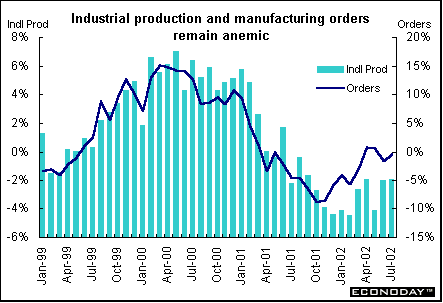
July seasonally adjusted industrial production fell 1.0 percent and 1.9 percent when compared with last year. Excluding construction, industry output fell 1.1 percent and 1.4 percent on the year. Manufacturing output fell 0.9 percent, partly reversing the 2.4 percent gain in June. Manufacturing output fell in all sub-sectors with the exception of the consumer non-durables category.
July seasonally adjusted merchandise trade surplus was €10.6 billion, up from a €9.7 billion surplus in June. Exports were down 4.4 percent on the month and 3.3 percent on the year. Imports sank 7.3 percent on the month and 8.8 percent on the year.
France - Second-quarter seasonally and workday adjusted gross domestic product rose 0.5 percent. The data confirm the recovery in private consumption but reveal growing weakness in the business sector. Private consumption rose 0.5 percent, public outlays rose 0.9 percent, and overall investment growth slowed to 0.1 percent.

July seasonally adjusted merchandise trade surplus widened to E2.375 billion. Exports rose 8.5 percent thanks to the continued strength of auto exports and a recovery in pharmaceutical and capital goods. The rise in exports to other European nations offset a decline to the United States. Exports are 2.2 percent lower when compared with last year. Imports rose 2.6 percent led by pharmaceuticals, car parts and semi-finished goods. Imports are 7.1 percent lower on the year.
Italy - Second-quarter gross domestic product rose 0.2 percent and 0.2 percent when compared with last year. The increase was buoyed by net exports, while internal demand made only a marginal positive contribution to growth. Inventory accumulation, which had been the sole source of growth in the first quarter, made virtually no contribution in the second quarter.
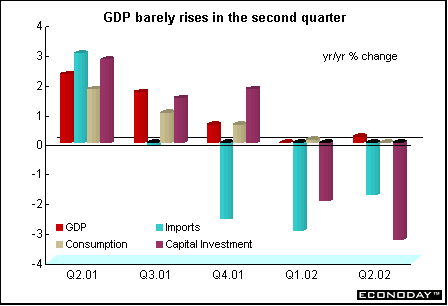
June industrial orders fell 4.8 percent following a 0.7 percent decline in May. Domestic orders plummeted 6.0 percent while foreign orders dropped 2.9 percent. Domestic orders account for around 62 percent of the overall index with foreign orders making up about 37 percent. Six of the ten product sectors fell with the largest decline in the precision equipment sector, which sank 18.2 percent.
Britain - August Chartered Institute of Purchasing and Supply purchasing managers' manufacturing index was 51.0, up from 49.1 in July and at its highest level since May. Behind the rise in the main index was a surge in output, at 55.0 from 50.2 in July. New orders also rose to 51.0 from 49.5 in July, and export orders were 50.8 compared with 49.4 in July.
July global merchandise trade deficit in goods narrowed to Stg2.465 billion from Stg2.820 billion in June. Excluding oil and erratic items, the trade balance narrowed more sharply to Stg2.255 billion from Stg3.129 billion previously. The main reason for the improvement was a sharp rise in exports to non-EU countries, which rose 9.5 percent compared with a 4 percent increase in import volumes. Globally, goods exports rose 3.8 percent while imports rose 1.2 percent.
August producer output prices slipped 0.1 percent but were up 0.3 percent when compared with last year. Core output prices, which exclude food, beverages, tobacco and petroleum products, remained unchanged on the month and were up 0.4 percent on the year. Seasonally adjusted input prices rose 0.5 percent but were 2.2 percent lower on the year.
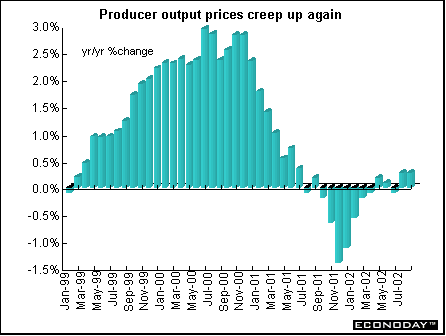
August claimant count unemployment rate remained at 3.1 percent, its lowest level since July 1975. For the three-month period from May through July, the unemployment rate using the International Labor Organization definition of joblessness, which excludes jobseekers that did any work during the month, remained stable at 5.1 percent. ILO employment rose 38,000 while the employment rate dipped to 74.6 percent from 74.8 percent previously.
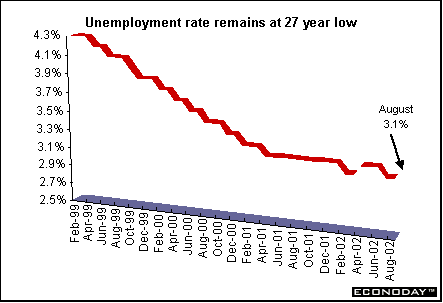
Average earnings in the three months to July rose by 4 percent, up from 3.9 percent in the previous three-month period. The increase might have been due to a change in timing of bonus payments. Excluding bonuses, yearly earnings growth fell to 3.9 percent from 4.1 percent. Manufacturing earnings rose to 3.6 percent from 3.5 percent previously, while services growth rose to 4.1 percent from 4 percent. Private sector earnings growth remained stable at 4 percent and public sector growth rose to 3.7 percent from 3.6 percent. For services, private sector earnings growth increased to 4.3 percent from 4.2 percent in the prior period.
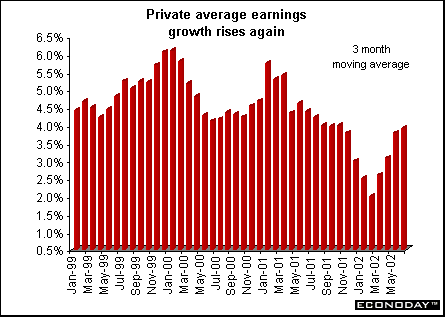
July manufacturing output rose 4.9 percent, the largest monthly increase since February 1979 when the increase was 9.4 percent. However, output was still down 2.6 percent on the year. Output plunged a revised 5.5 percent in June as factories closed for the Queen's Jubilee holiday. National Statistics warned that caution should be exercised in interpreting the recent monthly changes due to the Jubilee bank holiday, but added that output was now close to levels seen in May. Industrial production rose 3.4 percent but was still down 2.4 percent on the year.
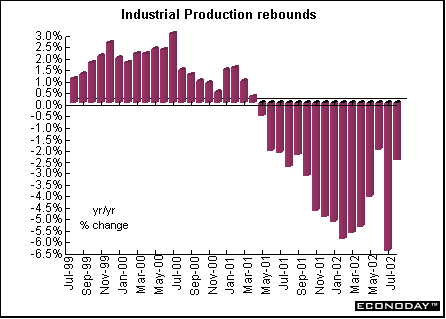
Asia
Australia - Second-quarter gross domestic product rose 0.6 percent and 3.8 percent when compared with last year. Consumption expenditures rose 1.3 percent and 4.4 percent on the year. Gross fixed capital expenditures jumped 5.1 percent and 16.3 percent on the year.
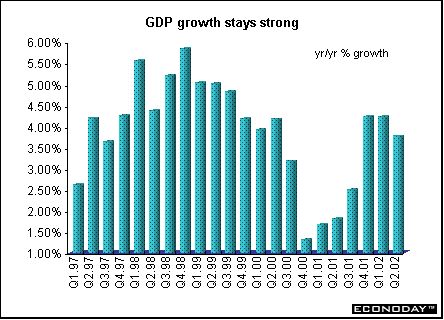
August seasonally adjusted unemployment rate remained at 6.2 percent. The number of employed jumped by 88,500. This was the largest monthly increase since August 1991. The workforce participation rate, or the proportion of working-age persons at work or actively seeking work, rose to 63.8 percent from 63.3 percent in July.
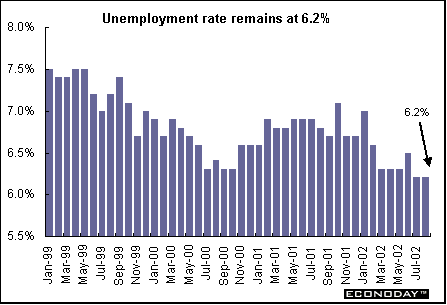
Japan -July seasonally adjusted household spending fell 0.3 percent following a 3 percent gain in June. Compared with last year, spending rose 1.3 percent after a 2.8 percent gain in June. Consumers spent less on furniture and clothing, but that was partly offset by an increase in household goods and medical services.
Second-quarter seasonally adjusted gross domestic product rose 0.6 percent compared with the initial estimate of 0.5 percent. Imports rose 2.6 percent against an earlier estimate of a 3.8 percent rise. Overseas shipments grew 5.7 percent. Capital investment fell 0.4 percent, less than the initial estimate of a 0.5 percent decline. Consumer spending, which makes up 55 percent of the economy, rose 0.2 percent, the same as initially estimated.
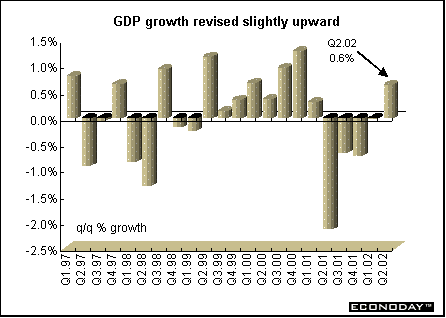
July seasonally adjusted current account surplus, the broadest measure of trade as it includes investment and services, shrank to ¥1.26 trillion ($10.5 billion) from ¥1.38 trillion in June. Exports declined 1.9 percent while imports rose 2.2 percent. The income account surplus, which tracks profits, dividends and interest payments, grew to ¥791.8 billion from ¥674.6 billion in June.
August corporate bankruptcies fell 3.1 percent on the year but the amount of liabilities soared 44 percent due to several large failures, according to private credit research agency Teikoku Databank Ltd. In August, 1,562 companies failed, leaving behind ¥1.059 trillion in debts. Compared with July, debts fell 12.0 percent while bankruptcy cases fell 13.9 percent.
Americas
Canada - August employment surged by 59,000 jobs. Despite this growth, the unemployment rate dipped just 0.1 percentage point to 7.5 percent as more people entered the labor market. The participation rate rose to 67.0 percent, the highest since November 1990. The growth was led by the manufacturing sector, which added 21,000 more jobs, and construction, which provided an additional 12,000 new jobs. At 34,000, the lion's share of new jobs created were part-time; the number of full-time jobs increased 25,000.
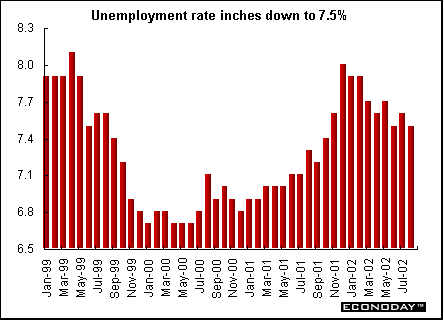


Last Week's Highlights • Global
Stock Market Indexes • Recap of Global Markets
• Currencies • Indicator
Scoreboard

The Bottom Line •
Looking Ahead
| ![[Back To Archive]](../../../images/backtoarchive.gif)